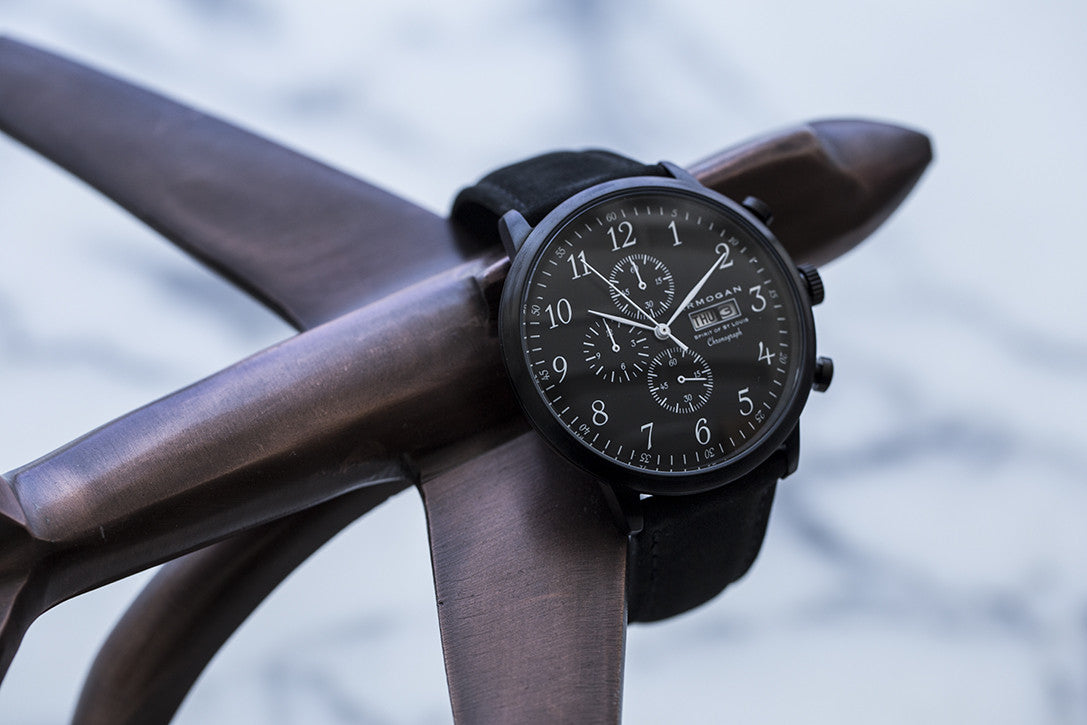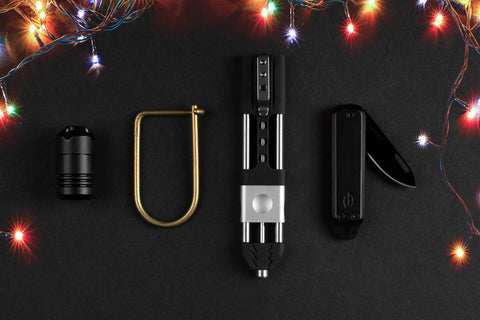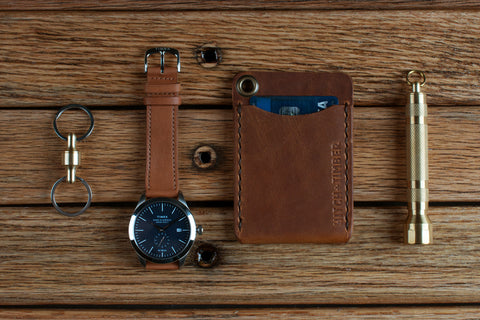Why You Should Always Wear A Watch

Born in the early 20th century, the wristwatch saw its popularity first bolstered after the outbreak of WWI, when infantrymen and aviators needed a practical and quick way to read the time so as to ensure that they carried out their sensitive missions down to the second. With the struggle of having to lug all of their other gear and the critical need for synchronized timing, the classic pocket watch had become a inconvenient and obsolete burden for the encumbered soldiers. So, to circumvent the problem, they began strapping their watches on their wrists. Over time, the trend caught on with the general populous until wristwatch production had eclipsed the more traditional chained pocket watch.
Once considered a silly fad that was primarily for women, wristwatches quickly became a symbol of modernity and class for men around the world. Soon, they became a nearly ubiquitous accessory and the variety of styles increased tenfold. Advancements allowed them to become more rugged. Once a fairly delicate device, watches were more and more frequently made waterproof, impact-resistant, and self-winding. Now we live in a world where there are watches for nearly every lifestyle. Whether you’re a deep-sea diver, a mountaineer, a soldier, or just a guy who wants to be able to tell the time at any given moment, there’s a watch out there for you.
About Time
In recent years we have seen the debut and subsequent conquest of the smart phone over many devices which had once been held in high esteem by men of adventure, business, and leisure alike. The wristwatch has seen some of the worst of it. Even in the world of everyday carry, people constantly seem to wonder why they should bother wearing such a purpose-specific item when they nearly always carry around something which can fulfill all the same functions and more. We understand that sentiment. Although we are always interested in finding ways to streamline our EDC, we still believe that a wristwatch is an indispensable addition to your daily arsenal. And here’s why.
Advantage
Watches are convenient. Whichever side of the fence you presently stand on regarding them - enthusiast or opponent - you cannot argue the ease with which you can tell the time on a wristwatch versus that of a cell phone. Rather than digging your phone out of your pocket conspicuously - and often rudely - just steal a quick glance at your wrist and you can garner the same information. They can go with you places that your phone may not be able to, such as the gym, on a hike, to the beach, or in a long afternoon meeting and the batteries last for much longer than a cell phone charge. And you’re less likely to drop and break one, as they typically attach securely to your wrist.
Ingenuity
So much of our daily lives are enveloped by a need to tell time in one way or another. Whether you need to just keep track of the hours as they tick by or if you require the ability to count up or down, you can do that - and more - with a good everyday carry wristwatch. That kind of preparation gives you an advantage over people who don’t wear one. A solid watch is more than just a neat accessory, it’s a temporal multitool that can keep you on track - whether you’re running to work or running to beat your personal lap record. And it seems pretty cool to be wearing a monument to human achievement which predates computers by literally hundreds of years.
Workmanship
Watches are functional pieces of artwork and are not something to be written off as strictly frivolous or kitschy. Their design and construction are things to be respected and they take a significant amount of skill, dedication, and attention to detail in order to be built. In regards to utility, the craftsmanship surrounding the creation of a watch may not seem like something of great import, but it is, as watches are simply clunky bracelets without it. Every watch represents centuries of history in regards to both the makers individually and humankind in general and should serve to inspire and remind you of how far we have come as a species. Perhaps it comes across as somewhat sentimental, but we find great value in heritage and progress.
Refinement
Without ever speaking a word, a watch says a lot about the quality and character of the person wearing it. They can profess a sureness and confidence in oneself, as well as some idea of the interests, hobbies, and priorities you hold dear. And they do so in a manner much more honest and lasting than a logo on a t-shirt ever could. Watches are more than a slogan on a coffee mug; they’re a subtle window into the life of the wearer. If you’re the outdoorsy type, you might look for a rugged multi-function watch with a nylon band. If you’re a gear head, you’ll probably opt for something reminiscent of the styling of a classic car. Without being a signal flare, a wristwatch has the potential to echo who you are.
Functional Forms
There are very few things that are as purpose-driven as wristwatches. While they come in all sorts of shapes, sizes, materials, and price points, they are a true representation of putting utility before all else. One way or another, they tell time before they serve any other function. And that makes them mighty in the world of EDC. They do something useful well and they do it reliably. Not only can you find one that comes equipped with numerous operations which suit your everyday needs, but you can cater the qualities of your watch to your individual style for any given day, season, venue, or otherwise. To help you pick out the best wristwatch for you, below we have defined some common terms and outlined their importance.
Movement: This is the engine of any given watch and it enables them to function. There are two main categories of movement: quartz or mechanical. Quartz movements use battery power and can be observed in the motion of the second hand - they tick abruptly from marking to marking. Mechanical movements work by a wound spring and the second hand moves more fluidly around the dial. Quartz movements tend to be highly accurate and require little maintenance, but mechanical movements do not need batteries to work. The most popular watch movements are made in either Switzerland or Japan, but that does not necessarily mean watches made elsewhere are unworthy.
Material: This refers both to the watch itself and the surrounding attachments. Cases are typically made from some kind of metal - like stainless steel, aluminum, gold, etc. - but can also come in alternative materials - such as ceramic or carbon fiber. Bands, similarly, come in a wide variety of substances, from nylon, to rubber, to leather, and more. Metal tends to look more formal and is very strong, but can easily scratch. Alternative materials can weather more extreme conditions and are more easily personalized, but may end up needing to be replaced depending on frequency and nature of abuse.
Size: Watch sizes are typically measured in millimeters. Case diameter refers to the width of the watch housing, but does not include any protruding knobs or the lug connectors - where the strap or band attaches. Lug width and band width are typically synonymous, but a thinner band can be connected to wider lug connectors with the proper hardware. The range of sizes generally fall between 20-50mm, but whatever size you get should be entirely based on your personal preferences.
Operation: Not all everyday carry watches come with alternative functions, but if you’re looking for a little more than simply a standard watch, there are plenty of additions you can get. The most common addition is a chronograph function - a stopwatch which can be started, stopped, and returned to zero through stem pressure. Other watches can display the date, moon phases, and it just gets more complicated from there. Some of the most high-tech wristwatches also have GPS functions. The best thing to do is to figure out what your function priorities are and find a watch that’s suitable.
Second Thoughts

Form Function Form Weekender Chronograph
An exercise in restrained beauty and reliable functionality, the Leather Timex Weekender Chronograph by Form Function Form is a no-frills wristwatch that won’t break the bank, but still offers a variety of operations. It features a 40mm Timex Weekender watch with chronograph functions; a high-quality, vegetable-tanned, Dublin Ale 20mm leather strap; and a silver button stud closure. This stylish wristwatch is simple, but - by no means - simplistic.

Jack Mason Aviator Watch
A watch does not necessarily require a metal or leather band in order to be refined, as is the case with the Jack Mason Aviator 3-hand watch. With styling inspired by the instrument gauges in the cockpit of an aircraft, this watch’s pleasant facade has been matched with a sturdy and durable, yet still stylish, 22mm nylon band. It comes equipped with a Japanese quartz movement for reliable consistency. Inside the 42mm case, the dial has the addition of Super Lumina markings for easy readability at any time of day or night. And it is water resistant up to 100 meters, for added durability.

Tsovet SVT-CN38 Watch
One of the best things about the watch designers at Tsovet is their understanding of subtlety. Take, for instance, their SVT-CN38. It isn’t overly flashy nor is it very busy, but they still managed to pack so much character into its styling. The branding on the face is almost more of an impression than a stamp and, like the slightest reminder, the dial features their trademarked ‘0’ instead of 10. The durable 38mm 316L stainless steel case is matched with an 18mm nylon band. And paired with the hardened mineral casing, the Swiss quartz movement is certain to tick for years to come.

Armogan Spirit of St. Louis
Inspired by the plane of the same name which was flown across the Atlantic ocean by Charles Lindbergh in May of 1927, Armogan’s Spirit of St. Louis line of watches are the ultimate in functional refinement. Highlighting the styling of the 1920s, these watches are equipped with a 22mm suede leather strap, slightly curved mineral glass, and a Japanese Miyota chronographic 0S00 movement. The dial features a day and date window and the 44mm case is water resistant up to 50 meters. With its 5 year battery life, this watch is made to last a lifetime.

Lum-Tec Combat B28 Military 24H
Not everybody lives their lives in standard time. For some people - veterans and active duty soldiers, for example - the clock ticks by in 24h military time. Yet it isn’t easy to find a watch to caters to these important folks. The designers at Lum-Tec noticed this, however, and endeavored to create a 25-hour wristwatch option. The Combat B28 is it. Beyond the Swiss Ronda 515.24H movement, the watch is housed in a 43mm 316L stainless steel case - which is water resistant up to 200 meters - that features 3 hands (hour, minute, second) with their exclusive MDV technology so that it can be read in all light conditions. The sapphire crystal is anti-reflective and the durable nylon strap ensures that this watch can be worn anywhere at any time. In fact, Lum-Tec offers a complimentary lifetime battery replacement service.

Omega Seamaster Planet Ocean 600M
Though they may seem a bit extravagant, some watches aren’t built to last a lifetime - they’re built to last several lifetimes. And handing down an heirloom watch is a tradition that spans generations and serves as a physical connector between men and their fathers, grandfathers, and great-grandfathers. Sometimes they reach even further down the historical trail. That’s what watches like the Omega Seamaster Planet Ocean 600M are built for - generations. the 43.5mm steel case surrounds a blue dial which is protected by a scratch-resistant and anti-reflective sapphire crystal. Below the surface sits a self-winding Omega 8900 movement with Co-Axial escapement that has a power reserve of 60 hours. This anti-magnetic chronographic chronometer is good enough for James Bond, so it’s good enough for you.
© Photography by Gallantry







